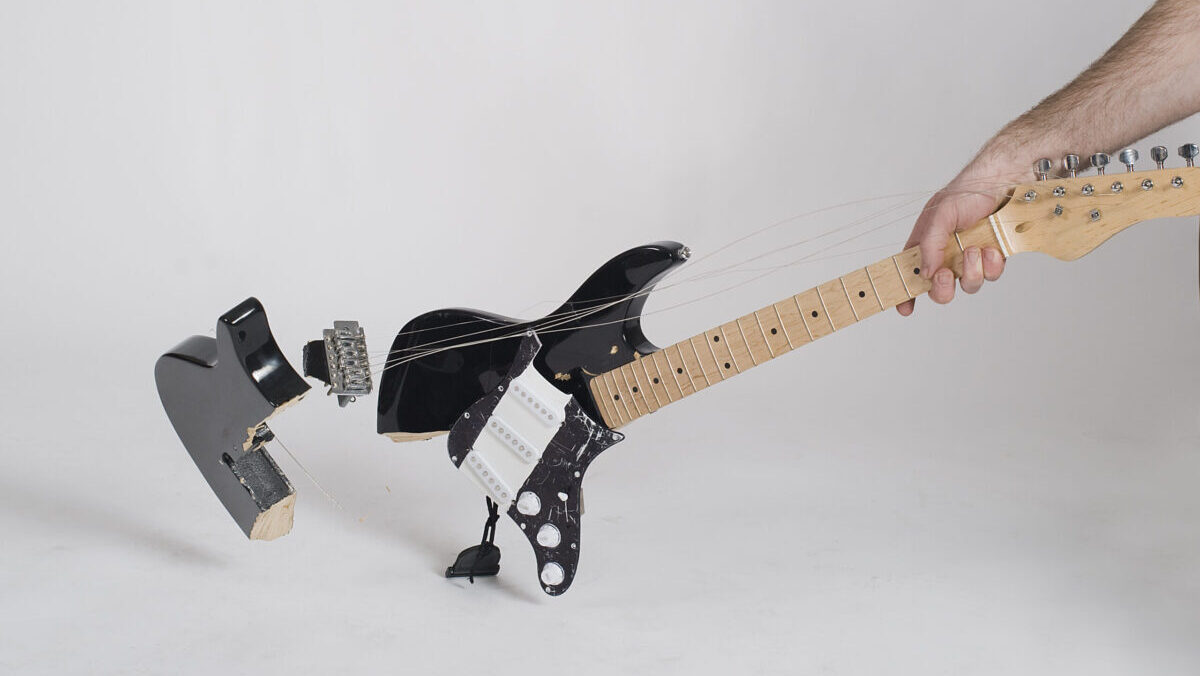Monsters of Rock: Exhaustion sets in as investors take mining profits

Infuriating stuff. Pic: Getty Images
- Copper hits all time high of almost US$10,900/t
- Miners still sold off, as profit takers hit Jupiter Mines and more
- IGO and Perenti belatedly release Cosmos EV study
We’ve hit a new record high in copper, nickel is back in the good books, zinc is upwards of US$3000/t and iron ore is on its way towards US$120/t.
Following speccy North American futures markets higher, LME copper hit US$10,889/t last night, up 2.1% even as Chinese end users cut output of copper wire.
Copper has never been so high, not even in May 2021 when it previously rose in excess of US$10,700/t in London.
It’s the perfect storm for a … broad pull back in ASX mining stocks, which were down over 0.75% as of 3pm AEST.
Profit taking appears to be the big theme across the sector, fairly obviously in the case of Jupiter Mines (ASX:JMS).
JMS shares had roughly doubled since late March, as the $630 million capped South African manganese producer profited off the closure of South32 (ASX:S32) GEMCO manganese operations in Groote Eylandt due to a damaging cyclone.
That was all long-time backer AMCI needed to crystallise some cash for its patience. It traded almost 146 million shares in a block trade at 32.5c a pop (well up on JMS’ 18c price in March).
7.44% of JMS’ shares were sold in the trade yesterday, though AMCI affiliates still boast 10.44% of the company and its MD Patrick Murphy remains on the miner’s board.
Speaking of AMCI, it’s one of the shareholders in the Onslow Iron project, where Mineral Resources (ASX:MIN) just put the first load of ore from its Kens Bore mine on a ship.
113,000wmt is being loaded on a bulk carrier around 40km off the Port of Ashburton, ferried by two MinRes transhippers.
MinRes will build up to a roughly 60% stake in the JV, a long dormant infrastructure and mining project that sat in development hell until an iron ore price spike in 2021 that proved the right time for Chris Ellison’s polymathic firm to come on board.
By June 2025, MinRes is hoping to ramp up to a capacity of 35Mtpa, with a dedicated haul road in which the miner is selling a non-controlling stake to pay off debt set to be completed in the second half of this year.
“We have unlocked a whole new iron ore region for Australia while Onslow Iron is a game-changer for MinRes as we transition to low-cost, long-life operations,” Ellison said.
“This project was stranded for more than a decade. In 2021, MinRes breathed new life into it and in less than three years we have planned, designed and have now delivered first ore on ship ahead of time and on budget.”
The first ship from the project will be delivered to Baowu, a project partner and China’s largest steelmaker, which has subscribed for the maximum 75% of MinRes’ offtake it is entitled to in CY24.
It demonstrates the interest from the Chinese steel sector in low grade iron ore (Onslow’s first shipment will run at 58.5% Fe), as margin pressures continue to trump longer term emissions reductions in steel mills’ business decisions.
MinRes says the project has forecast cash costs FOB of $45/wmt, though that includes its own contractor margins and an $8.04/t road charge, with the project generating a 20% ROIC at US$75/t for 62% Fe iron ore.
A study that came a little too late
In today’s most amusing mining news, Perenti Global (ASX:PRN) and ABB have completed a pre-feasibility study showing it’s technically feasible and economically attractive to switch out diesel vehicles for battery electric at the IGO (ASX:IGO) Cosmos nickel mine in the northern Goldfields.
It’s a pity the mine itself bears no economic attraction. A dive in nickel prices earlier this year sent the billion dollar project into mothballs before IGO could even mine a tonne of ore.
The mine had been the key, long-term asset acquired by IGO in its $1.3 billion cash acquisition of Western Areas, along with a few trailing years of mine life at the ageing Flying Fox and Spotted Quoll mines at Forrestania.
But the project was placed on ice amid a financial tire slash, with falling nickel prices and rising capital costs prompting IGO’s board to write down virtually the entire value of the deal last year.
Given Cosmos’ current status this study feels as real as an AI Tupac, but for what it’s worth, ABB, IGO and Perenti say the white paper could assist miners elsewhere looking to go battery electric underground.
A battery electric fleet comes in around 6% more expensive once the transition is done, but the companies claim that will even out as carbon prices and diesel costs are taken into account, with the increased power draw cancelled out by a reduced requirement for cooling and ventilation at depth.
Speaking of nickel, this year’s saddest major commodity has posted a rapid turnaround after Eramet was forced to curb operations in New Caledonia, where constitutional protests have spiralled into violence.
LME nickel lifted 2.5% overnight to US$21,615/t, well above lows of ~US$16,000/t in January which prompted a slew of miners to shut down or curb operations and BHP (ASX:BHP) to warn it could mothball the Nickel West division in WA, which employs over 3000 people and produces around 80,000t of nickel metal a year.
Cosmos carried a capex estimate of $425m when IGO completed its takeover of WSA in 2022, but that was pumped up to $825m in October of that year.
Impairments on the Cosmos and Forrestania mines in the past two financial years have totalled around $1.14bn.
Today’s Best Miners
ALS (ASX:ALQ) (lab analysis) +5.1%
Imdex (ASX:IMD) (drilling services) +3.2%
29Metals (ASX:29M) (copper) +2.8%
Whitehaven Coal (ASX:WHC) (coal) +2.3%
Today’s Worst Miners
Sayona Mining (ASX:SYA) (lithium) -12.2%
Jupiter Mines (ASX:JMS) (manganese) -9.2%
Wildcat Resources (ASX:WC8) (lithium) -4.6%
Monstars share prices today
ASX 300 Metals and Minings Index today
Related Topics

UNLOCK INSIGHTS
Discover the untold stories of emerging ASX stocks.
Daily news and expert analysis, it's free to subscribe.
By proceeding, you confirm you understand that we handle personal information in accordance with our Privacy Policy.








